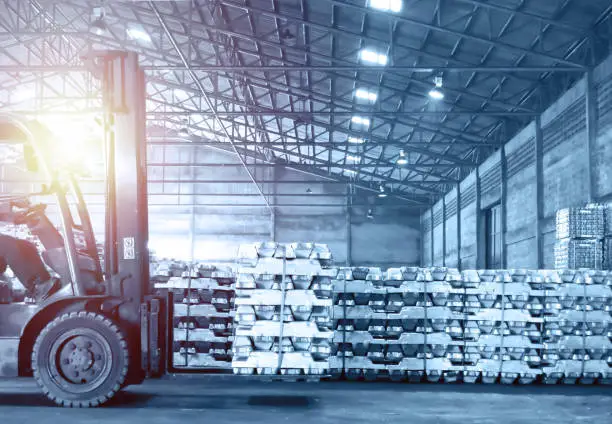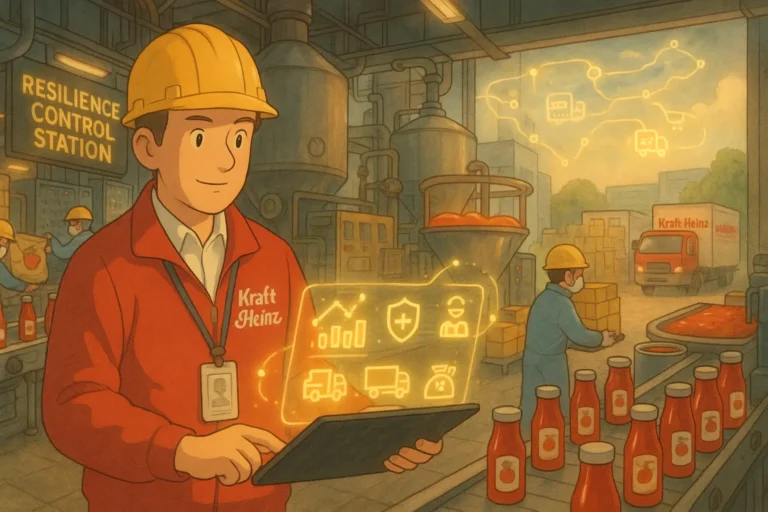
Supply chains deal with the sourcing, production, storage, and transporting of goods to customers. However, material handling ensures the product gets to the customer in the right condition, which makes optimizing it a no-brainer.
Material handling is the process that ensures the supply chain is a success, and in this article, we review its concepts along with strategies that can improve it.
In a world where all eyes are on the supply chain, it is important to remember that there is no supply chain without a successful implementation of material handling.
What is Material Handling?
Material handling is the movement of goods from one point to another in the supply chain. The process starts just before manufacturing and ends when the customer has received the product.
The overall objective of the material handling process is the safe movement and storage of goods until it gets to the customer.
In rare cases, even while it is with the customer. It can be used across different processes and at different levels of the supply chain. However, it is mostly prominent in warehousing and logistics.
Benefits of Improving the Material Handling Process
Material handling ensures the customer gets the right product in the right condition. This means there must be some benefits to improving or optimizing the process.
1. Cost Savings
The secondary objective of most supply chains is to save money. This is where material handling excels.
Investing in the right tools and processes can reduce product damage, ensure efficiency, and reduce the labour force required.
But this Investment can be capital-intensive. At least initially. Not to worry though. It more than pays for itself in the long run.
2. Safety
By optimizing the material handling process, you improve the safety of people and products involved in the supply chain.
Better procedures mean fewer accidents. Better tools mean maximizing the movement of goods across the supply chain.
These tools include conveyor belts, pallets, lift trucks, and bucket elevators.
3. Space Maximization
Space plays a huge role because it allows easy movement of people and goods.
The tools and solutions you implement when optimizing the material handling process make space available.
This, in turn, ensures goods are safely transported throughout the warehouse or production faculty. An example of a tool that maximizes space is the pallet.
4. Employee Satisfaction
As much as technology is taking centre stage in the economy, there are still places where people cannot be displaced. For instance, you need people to sort, order, and pick, among others.
Yes, technology can assist and provide efficiency in the process, but it cannot be complete without people.
When people feel safe and work in a standardized environment, they appreciate the workspace, motivating them to stick around. When they stick around, you have fewer labour turnovers and spend less money on recruiting and training.
5. Improve Customer Service
As much as it seems obvious, not everyone gets the right goods to the customers in the right condition.
When you optimize your material handling process, it makes it more likely that your supply chain will deliver to your customer, which improves customer satisfaction. Improved customer satisfaction ensures that your supply chain is still in business.
Strategies for Optimizing the Material Handling Process
There are five strategies that you can take to optimize your Material Handling Process.
1. Assess the current process and Identify How Optimal You Want the Material Handling Operation
No process or solution can do without some improvement. The same applies to material handling. To improve or optimize it, start by understanding the current process and then analyze it to find potential areas and tools to improve it.
To do this effectively, you can conduct employee surveys, monitor the process, or employ tech solutions to analyze the pitfalls of the current process.
The next stage is to identify areas you want to improve from the current process and how you want to implement them.
The “HOW” is necessary to avoid mistakes and disruptions in the material handling process.
2. Pick & Utilize the Right Tools
Tools are what facilitate the entire material handling process. The right tools can save your supply chain time, money, and resources.
After identifying areas you want to improve and how you want to improve, the next step is to select the right tools to help you facilitate it.
These tools could help preserve materials and improve the ergonomics process.
Improving ergonomics helps reduce each person’s movement in the material handling process, which reduces injuries and safety hazards throughout the supply chain.
3. Simplify and Standardize
The material handling process can be quite complicated. And complications can be quite confusing for people, which slows down the process. It could also lead to damages.
You can reduce errors and utilize resources efficiently in the supply chain by simplifying and standardizing the material handling process.
To do this, work to reduce or limit movements across the process.
Review the policies to make them understandable to the people and integrate tech solutions that will help make the process more efficient.
4. Implement Sustainability
Sustainable practices are the next big thing, and it’s not all hype.
By implementing sustainable practices, you can significantly reduce the impact of your material handling processes on the environment.
To do this, you can encourage your supply chain team to reuse tools such as bags. You can also encourage recyclable packing materials, returnable containers, and reusable packaging.
Sustainable practices include co-shipping, considering waste management alternatives, and reducing fuel consumption.
5. Optimize the Storage Layout
A huge part of material handling is the storage. As we mentioned, it is primarily the movement and storage of goods through the supply chain.
An optimized storage space will save a lot of money. Optimizing storage space typically entails the optimization of the warehouse layout.
To do this, start by analyzing your storage situation at the warehouse, storage facility, or specialized storage facilities.
Maximizing the storage space will go a long way in optimizing your material handling process, especially because of resource conservation.
Principles of Optimizing Material Handling
These are guidelines or factors that help in the optimization of the process.
𝟭. 𝗣𝗹𝗮𝗻𝗻𝗶𝗻𝗴: Thorough planning is the foundation of efficient material management. It entails analyzing the operation’s requirements, comprehending the properties of the materials, and developing effective workflows.
𝟮. 𝗦𝘁𝗮𝗻𝗱𝗮𝗿𝗱𝗶𝘇𝗮𝘁𝗶𝗼𝗻: When possible, standardize equipment and procedures. This lessens complexity and boosts effectiveness. Standardization can apply to storage practices, handling tools, and packaging.
𝟯. 𝗘𝗿𝗴𝗼𝗻𝗼𝗺𝗶𝗰𝘀: Put worker comfort and safety first. Create workstations, tools, and machinery to lower the danger of strain and injury. Workplaces that are ergonomically constructed have higher levels of morale and productivity.
𝟰. 𝗔𝘂𝘁𝗼𝗺𝗮𝘁𝗶𝗼𝗻: When possible, use automation. Conveyor belts, robotic arms, and automated guided vehicles (AGVs) are examples of automation technologies that can handle labour-intensive and repetitive activities more effectively.
𝟱. 𝗦𝘂𝘀𝘁𝗮𝗶𝗻𝗮𝗯𝗶𝗹𝗶𝘁𝘆: Take into account how material handling operations affect the environment. Routes, packing, and storage should all be optimized to save waste and energy use.
𝟲. 𝗦𝗽𝗮𝗰𝗲 𝗨𝘁𝗶𝗹𝗶𝘇𝗮𝘁𝗶𝗼𝗻: Maximize the effectiveness of your workspace and storage space. To save space, use just-in-time inventory systems, optimize rack designs, and use vertical storage solutions.
𝟳. 𝗧𝗿𝗮𝗶𝗻𝗶𝗻𝗴: Make an investment in employee education and training. Personnel who have been properly trained are necessary for secure and effective material handling. Training should address how to use the equipment safely and in accordance with industry standards.
𝟴. 𝗠𝗮𝗶𝗻𝘁𝗲𝗻𝗮𝗻𝗰𝗲: To avoid breakdowns and guarantee safety, inspect and maintain material handling equipment on a regular basis. Regular maintenance decreases downtime and increases equipment longevity.
𝟵. 𝗩𝗶𝘀𝗶𝗯𝗶𝗹𝗶𝘁𝘆: Improve your understanding of material flows and inventory levels. Better decision-making and inventory management are made possible by tracking and real-time data.
𝟭𝟬. 𝗦𝗮𝗳𝗲𝘁𝘆: This should always come first. To avoid mishaps and injuries, implement safety procedures, offer personal protective equipment (PPE), and conduct safety audits.
FAQs on Optimizing Your Material Handling
Q1: What sustainable material handling techniques are there?
Sustainable methods include cutting waste, improving packaging, consuming less energy, and employing eco-friendly supplies and tools.
Q2: Why is employee education so important in optimizing the material handling process?
Employees who have received the appropriate training can use equipment properly, adhere to best practices, and support effective material handling procedures.
Q3: How might technology increase visibility in material handling?
Real-time data analytics and tracking technologies give firms visibility into the movement of materials and aid in decision-making.
Q4: What safety factors are taken into account when handling materials?
Implementing safety procedures, providing PPE, performing safety audits, and routinely servicing equipment are among the safety aspects that help to avoid accidents and injuries.
Conclusion
It is impossible to emphasize the significance of optimizing material handling in the complex world of supply chains. It is the support system for the entire operation, ensuring its dependability and success.
This article explored the ideas behind material handling and revealed methods to increase its effectiveness. The ultimate support of any supply chain is material handling. It ensures that goods are delivered on time and undamaged to clients.
Material handling choreographs this complex dance from the start of production till a product is in the customer’s hands.

Obinabo Tochukwu Tabansi is a supply chain digital writer (Content writer & Ghostwriter) helping professionals and business owners across Africa learn from real-world supply chain wins and setbacks and apply proven strategies to their own operations. He also crafts social content for logistics and supply chain companies, turning their solutions and insights into engaging posts that drive visibility and trust.








